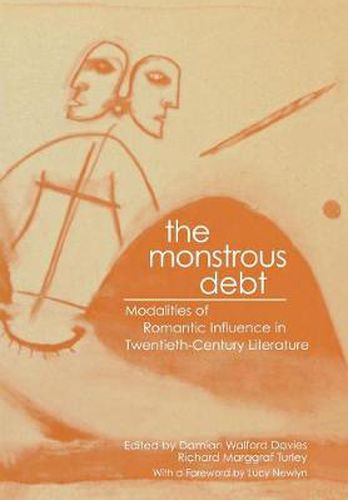Readings Newsletter
Become a Readings Member to make your shopping experience even easier.
Sign in or sign up for free!
You’re not far away from qualifying for FREE standard shipping within Australia
You’ve qualified for FREE standard shipping within Australia
The cart is loading…






The authors in this collection join an animated debate on the persistence of Romanticism. Even as dominant twentieth-century cultural movements have contested Romantic
myths
of redemptive Nature, individualism, perfectibility, the transcendence of art, and the heart’s affections, the Romantic legacy survives as a point of tension and of inspiration for modern writers. Rejecting the Bloomian notion of anxious revisionism,
The Monstrous Debt
argues that various kinds of influences, inheritances, and indebtedness exist between well-known twentieth-century authors and canonical Romantic writers. Among the questions asked by this volume are: How does Blake’s graphic mythology submit to
redemptive translations
in the work of Dylan Thomas? How might Ted Hughes’ strong readings of a
snaky
Coleridge illuminate the
mercurial
poetic identity of Sylvia Plath? How does Shelley
sustain
the work of W. B. Yeats and Elizabeth Bishop with supplies of
imaginative oxygen ? In what ways does Keats enable Bob Dylan to embrace influence? How does Keats prove inadequate for Tony Harrison as he confronts contemporary violence? How does
cockney
Romanticism succeed in shocking John Betjeman’s poetry out of kitsch into something new and strange?
The Monstrous Debt
seeks to broaden our sense of what
influence
is by defining the complex of relations that contribute to the making of the modern literary text. Scholars and students of the Romantic era will enjoy this informative volume.
$9.00 standard shipping within Australia
FREE standard shipping within Australia for orders over $100.00
Express & International shipping calculated at checkout
The authors in this collection join an animated debate on the persistence of Romanticism. Even as dominant twentieth-century cultural movements have contested Romantic
myths
of redemptive Nature, individualism, perfectibility, the transcendence of art, and the heart’s affections, the Romantic legacy survives as a point of tension and of inspiration for modern writers. Rejecting the Bloomian notion of anxious revisionism,
The Monstrous Debt
argues that various kinds of influences, inheritances, and indebtedness exist between well-known twentieth-century authors and canonical Romantic writers. Among the questions asked by this volume are: How does Blake’s graphic mythology submit to
redemptive translations
in the work of Dylan Thomas? How might Ted Hughes’ strong readings of a
snaky
Coleridge illuminate the
mercurial
poetic identity of Sylvia Plath? How does Shelley
sustain
the work of W. B. Yeats and Elizabeth Bishop with supplies of
imaginative oxygen ? In what ways does Keats enable Bob Dylan to embrace influence? How does Keats prove inadequate for Tony Harrison as he confronts contemporary violence? How does
cockney
Romanticism succeed in shocking John Betjeman’s poetry out of kitsch into something new and strange?
The Monstrous Debt
seeks to broaden our sense of what
influence
is by defining the complex of relations that contribute to the making of the modern literary text. Scholars and students of the Romantic era will enjoy this informative volume.